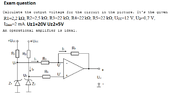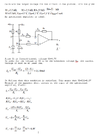The simplest OpAmp model looks like -
Basically the output, w/o feedback, looks like simply the difference of the inputs x G,
where G is very large 100,000 into the million. If you add feedback, ground the non
inverting input you will find the output is the inverting input X ratio fdbk R to input R
minus a tiny amount due top A being finite.
The analysis for inverting here
https://www.kennethkuhn.com/students/ee431/op_amp_analysis.pdf
What you find is that as the A becomes infinite the overall circuit G becomes just the ratio of
the two R's. So we have (in somewhat ideal case) an amp whose internal errors no longer
contribute to output, a simple method of amping a signal and only errors are a pair of resistors.
Again ideal case where A = infinity.
One of the outcomes of this is virtual ground, eg. the fact that if A internal = infinity then in
simple inverting case this happens
In case of non inverting virtual ground means the inverting = non inverting input
at the OpAmp - and + inputs. This makes analysis even simpler when doing calcu-
lations. Again the simple case / simple model.
Proof of this in reference above. All from simple loop and node equations.
Real models this becomes more complicated, still loop and node equations,
and AC case even more complex because the A internal to the opamp actually
does this (for many OpAmps).
When calculating the U voltages keep in mind in ideal model no current flows
into or out of the OpAmp - and + inputs, so writing loop and node equations
simple. Becomes a simple series loop of Vin > R1 > Rf > Vout for inverting
loop.
And for the non inverting path since no current flows in or out of - and + inputs
there is no drop across R5 so U = ? Vz2 = I x R5 + U.....I = 0.....so U = ?
Again ideal model. Real OpAmps have finite input Z, finite output Z, and equations
become messy, but still loop and node. Its fun to solve for overall circuit Z, in and out,
and see what various OpAmp internal characteristics and how they affect real results.
Regards, Dana.



